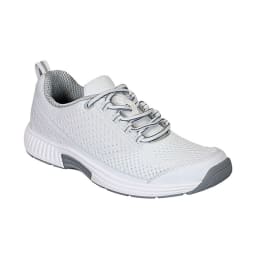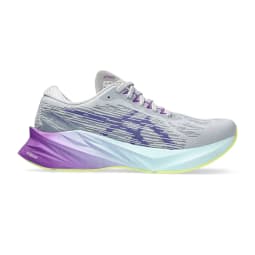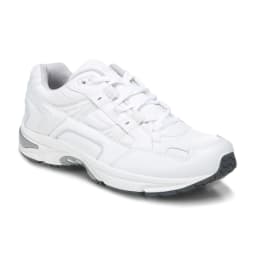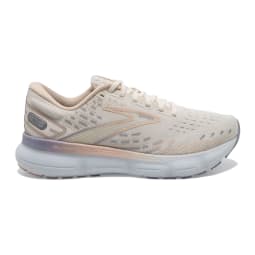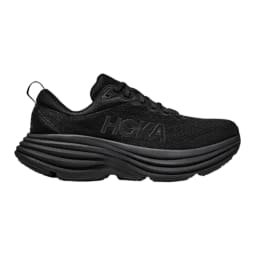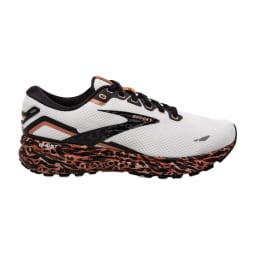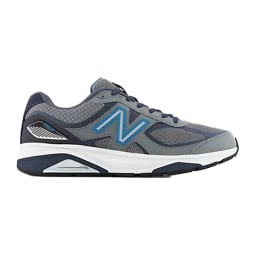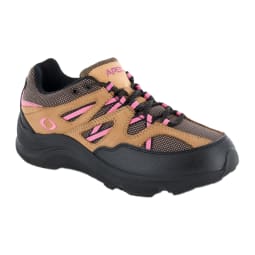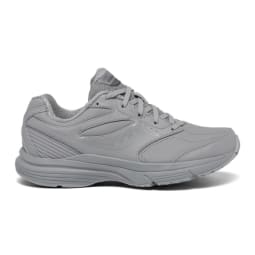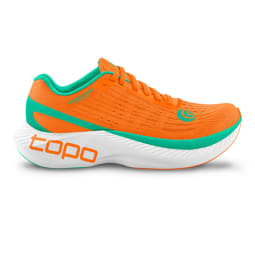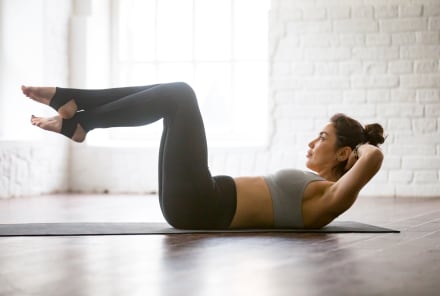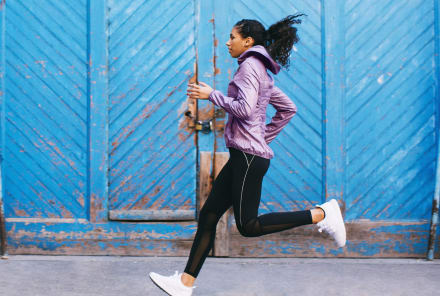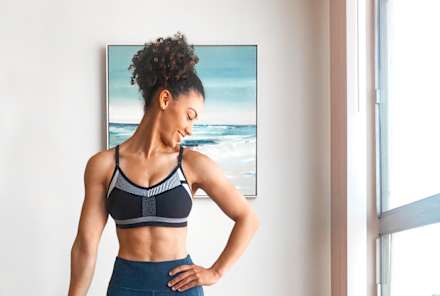Advertisement
The 10 Best Shoes For Arthritic Feet, With Recommendations From Podiatrists

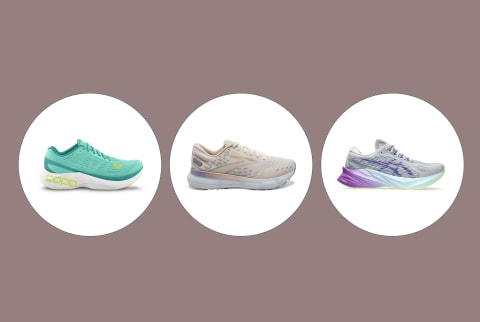
- Best orthopedic: Orthofeet Coral Stretch Knit
- Best shoe with recycled materials: Asics NovaBlast 3
- Best walking shoes: Vionic Walker Classic
- Best road running shoe: Brooks Glycerin 20
- Best rocker bottom: Hoka Bondi 8
- Best size range: New Balance 1540v3
- Best color variety: Brooks Ghost 15
- Best trail running shoes: Apex Sierra Trail Runner Active Shoe
- Best value: Saucony Integrity Walker 3
- Best cushioning: Topo Athletic Specter
Choosing the right shoes is critical—but the stakes rise even higher when you have an existing foot condition, such as arthritis. According to Miguel Cunha, DPM, podiatrist and founder of Gotham Footcare in New York, "The best shoes for arthritic feet will reduce or eliminate foot pain, which has a tremendous impact on the body's function and mobility."
Research has shown at least 54 million Americans suffer from arthritis—and recent studies indicate that arthritis prevalence in the U.S. was previously underestimated, particularly in adults younger than 65 years old. These numbers show that one in three adults ages 18 to 64 have arthritis1.
If you deal with arthritic feet, you likely already know how intrusive it can be on day-to-day life. After all, the feet are the foundation of the body. The good news? Physical activity can reduce pain and improve functionality in those with arthritis. The best shoes for arthritic feet will help you stay active and boost your quality of life.
What is arthritis?
Cunha describes arthritis as acute or chronic inflammation of a joint and its surrounding soft tissues.
Osteoarthritis, rheumatoid arthritis, and post-traumatic arthritis are all the three major types of arthritis that commonly affect the foot and ankle.
Osteoarthritis is most commonly experienced in those middle-aged and older but can sometimes occur in younger people. Also known as degenerative arthritis, this is when the cartilage in the joint begins to wear away gradually, which can cause the painful sensation of bone rubbing on bone. In osteoarthritis, pain and stiffness worsen with time.
Rheumatoid arthritis, on the other hand, is a chronic autoimmune disease, meaning it occurs from the immune system attacking its own tissues. It can affect multiple joints throughout the body but commonly begins in the foot and ankle. While the exact cause is not known, rheumatoid arthritis is typically triggered by an infection or environmental factor.
Post-traumatic arthritis can emerge after a specific injury in the foot or ankle, such as dislocation or a fracture. The impact is similar to osteoarthritis, with the cartilage wearing away between the joints. Even with proper treatment, an injured joint is almost seven times more likely than an uninjured joint to develop arthritis.
Per Cunha, arthritis in your feet can cause discomfort or pain that can eventually lead to limited motion, loss of joint function, and deformities in your affected joints.
"In arthritis, progressive joint deterioration occurs and the smooth, gliding surface covering the ends of bones (cartilage), which serves to cushion the joint, is gradually lost, resulting in the bones wearing against each other," he explains.
Symptoms of arthritic feet
If you're experiencing symptoms of arthritis, it's best to consult with a doctor to come up with a potential treatment plan and determine what types of shoes will be best for you. Below are a few symptoms of arthritic feet.
- Pain in the foot and/or ankle
- Tenderness in the foot and/or ankle
- Stiffness or swelling in the joints
- Decreased mobility and range of motion
- Warmth in the joint
- Increased pain or swelling after longer periods of sitting, standing, or walking
What makes a good shoe for arthritic feet?
When looking for the best shoes for arthritic feet, experts recommend keeping the below criteria in mind:
Comfortable footbed: Cushioned sneakers are preferable, according to Alissa Kuizinas, DPM, a Concord, Massachusetts–based podiatrist. Cunha adds that the best shoes for arthritic feet provide support with a memory foam or ethyl vinyl acetate (EVA) anti-compression sole.
Shock-absorbent outsole: Cunha recommends looking for shoes that feature an outsole will better alleviate the impact of each step on arthritic joints compared to a hard sole.
Durability: Shoes with smooth, solid leather uppers are best since they're highly durable yet flexible and comfortable, says Cunha.
Structure: "Arthritic feet tend to have some deformities as well, so for my patients with this type of foot I like a very structured, supportive shoe," says Sondema Tarr, DPM, a podiatrist and founder of Direct Podiatry Arizona. "This type of shoe prevents additional motion at these joints, making walking and standing more comfortable."
Research backs these recommendations, too. One meta review of 11 studies showed that proper footwear intervention resulted in a decrease in foot pain, impairment, and disability for people with rheumatoid arthritis, along with improved walking speed2. The shoes used featured characteristics such as extra cushioning, a wider toe box, and a rocker sole.
What shoes should people with arthritic feet avoid?
It's best to steer clear of shoes that have a minimal sole. "If you have arthritic feet, you may want to avoid more minimalist shoes and stick with something that has some cushioning," Kuizinas explains. "If several joints in the feet have arthritis, the feet may not be able to move well in a natural pattern anymore and may need help with offloading."
Additionally, studies have found that shoes with a high heel increase your risk of developing osteoarthritis.
The best shoes for arthritic feet
Pros:
- Wide toe box
- Wide and extra-wide fit options
Cons:
- Brand does not have sustainability statement
Sizes available:
5–12 (half sizes available)Colorways:
9Return policy:
60 daysThese sneakers combine cushioning, a rocker sole, and a wide toe box for maximum comfort. They’re available in sizes 5 to 12, in standard, wide, and extra wide variations. The shoes come with additional insoles which you can choose to add in, depending on your foot shape and individual needs.
This shoe has the American Podiatric Medical Association (APMA) Seal of Acceptance, which signifies that their design promotes good foot health.
Pros:
- Maximum cushioning
- Responsive design
Cons:
- Fit may be too wide for those with narrow feet
Sizes available:
5–12 (half sizes available)Colorways:
19Return policy:
90 daysCunha recommends these running shoes because of their superior cushioning and a lightweight, responsive design that reduces the impact of heel strike on arthritic joints. The trampoline-inspired outsole is designed to produce a responsive bounce back.
Keep in mind, this is a neutral shoe. That means it’s best suited for people who don’t over- or under-pronate (i.e. roll their feet inward or outward as they walk).
Advertisement
Pros:
- Standard and wide widths
- Water repellant
- Odor-resistant insole
Cons:
- Not lightweight relative to other options
Sizes available:
5–12Colorways:
8Return policy:
30 daysVionic prioritizes cushioning and shock absorption in its shoe designs—and these walking shoes are no exception. They have an EVA midsole and a durable water repellent or suede upper, with a removable orthotic insole.
While the shoes are not the most lightweight, we love that the insole is made with an antibacterial material to prevent foot odor (in case you do sweat).
Pros:
- Narrow and wide widths available
- Soft cushioning
Cons:
- Some customers find that the heel is too roomy
Sizes available:
5–12 (half sizes available)Colorways:
25Return policy:
90 daysThis road running shoe features the brand’s softest cushioning for an ultra plush feel. It's available in narrow, standard, and wide widths, and a slew of colors and patterns.
With a wider toe box, sufficient cushioning, and a secure-yet-breathable fit, these shoes meet podiatrist recommendations for people with arthritic feet.
Reviewers with arthritis say they’re soft and comfortable to wear for long periods of time.
Advertisement
Pros:
- Recycled materials
- Stabilizing design
Cons:
- Too narrow for some
Sizes available:
5–12 (half sizes available)Colorways:
21Return policy:
30 daysThe Hoka Bondi 8 is a super-cushy neutral running shoe. It holds the APMA Seal of Acceptance and is available in both standard and wide widths. The show is partially made with recycled materials, including a mesh upper that’s 50% recycled polyester.
Unsurprisingly, this shoe has received high marks from customers. One reviewer with arthritis in both feet says they're more comfortable than prescription orthotics. Of course, you'll still want to check with your podiatrist to see what's best for you.
Pros:
- Balanced support
- Secure fit
Cons:
- Narrower toe box
Sizes available:
5–13 (half sizes available)Colorways:
34Return policy:
90 daysThe Brooks Ghost 15 is a neutral running shoe with a midsole that provides soft cushioning. The product is carbon neutral and its upper is made of 57% recycled material.
This is another neutral support option, with the brand's BioMoGo DNA Loft throughout the midsection for a smoother stride. Even better, it’s available in both wide and narrow widths.
We give these shoes a lot of love, but it's for good reason. They're a great pick for runners with high arches or wide feet, and we included them in our roundup of the best walking shoes for women, per podiatrist guidelines.
Advertisement
Pros:
- Available in 5 widths
- Soft cushioning
Cons:
- Limited color options
Sizes available:
5–13 (half sizes available)Colorways:
2Return policy:
45 daysTarr suggests the New Balance 1540v3 as another structured, supportive option. The running shoe has a midsole that’s designed for those who overpronate (i.e. allow their feet to roll outward when running).
People with wide feet will love that these come in standard, wide, extra wide, and extra-extra wide options, with sizes running from 5 to 13. We even chose them as some of the best cushioned running shoes, particularly for older runners.
Pros:
- Specifically designed for arthritic feet
- Antimicrobial lining
Cons:
- Only one color available
Sizes available:
5–11 (half sizes available)Colorways:
1Return policy:
30 daysDon't let arthritis symptoms keep you from your trail activities. This pick is designed specifically for people who have arthritic feet, bunions, or plantar fasciitis, among other concerns.
The mesh upper is lightweight and breathable, while the cushioned sole is great for shock absorption. These shoes are available in standard, wide, and extra wide fits and are best suited to those who over-pronate.
Advertisement
Pros:
- Four width options
- APMA Seal of Approval
Cons:
- Limited color options
Sizes available:
5–12 (half sizes available)Colorways:
3Return policy:
30 daysOne of the best orthopedic shoes available today, the Saucony Integrity Walker 2 is a great option to wear as-is, or with custom orthotics. The insoles feature the brand's signature cushioning material, which is half the weight EVA and provides significant bounce.
The upper part of the shoe is made with leather for durability, another positive factor if you have arthritic feet. Plus, the shoe comes in narrow, regular, wide, and extra wide widths.
Pros:
- EVA soles
- Wide toe box
Cons:
- Limited amount of colorways
Sizes available:
6–11 (half sizes available)Colorways:
4Return policy:
30 daysThis sneaker comes recommended by Kuizinas, thanks to its ample cushioning. It also features a rocker sole, which Kuizinas says many people with arthritic feet find to be comfortable.
Awide toe box allows your toes to splay out naturally, rather than cramming them together. This design is also less likely to aggravate issues like hammer toes or bunions.
The EVA outsole encases a lightweight foam midsole, a combination intended to make the shoe stable despite its thick sole.
Reviewers with arthritis say these shoes allow them to walk faster than any others they've tried.
Advertisement
How we picked
Podiatrist insight
We consulted with podiatrists and used their insights to determine what to look for in the best shoes for arthritic feet.
Cushioning
Per research and podiatrist guidelines, the best shoes for arthritic feet have sufficient cushioning. We kept this in mind when evaluating the options.
Reviews
Customer reviews helped us determine whether these shoes really hit the mark. We prioritized those with feedback from people who have arthritic feet.
Price
The best shoes for arthritic feet will make a huge difference in your day-to-day mobility, relief, and long-term quality of life. That said, we looked for shoes that fit a range of budgets.
Comparing the best shoes for arthritic feet
| Product | Price | Sizes available | Colorways | Return policy |
|---|---|---|---|---|
| Orthofeet Coral Stretch Knit | $120 | 5-12 | 9 | 60 days |
| Asics NovaBlast 3 | $140 | 5-12 | 19 | 90 days |
| Vionic Walker Classic | $110 | 5-12 | 8 | 30 days |
| Brooks Glycerin 20 | $160 | 5-12 | 25 | 90 days |
| Hoka Bondi 8 | $165 | 5-12 | 21 | 30 days |
| Brooks Ghost 15 | $180 | 5-13 | 34 | 90 days |
| New Balance 1540v3 | $180 | 5-13 | 2 | 45 days |
| Apex Sierra Trail Runner Active Shoe | $100 | 5-11 | 1 | 30 days |
| Saucony Integrity Walker 3 | $90 | 5-12 | 3 | 90 days |
| Topo Athletic Specter | $160 | 6-11 | 4 | 30 days |
FAQ
What makes foot arthritis worse?
Many factors contribute to symptoms of arthritic feet, but our experts agree that improper footwear can make these symptoms worse. That considered, be sure to choose your shoes mindfully.
What is the most common arthritis in feet?
Osteoarthritis is a the most common form of arthritis. It can occur in many parts of the body, but most often in weight-bearing joints, such as the knees, hips, and feet.
What are the best shoes to wear with arthritis in your feet?
This will depend on a number of other factors, too, but podiatrists say the best shoes for arthritic feet are typically those with more cushioning, a wider toe box, a shock-absorbent outsole, and sufficient structure and support.
The takeaway
Pain and discomfort from arthritis can progressively worsen over time, especially if you don't have the best shoes for arthritic feet. When choosing which pair is right for you, keep our expert's insights in mind. The above options meet podiatrist guidelines, so you can stay active and keep your pain levels low. For more shoe recommendations, check out our top picks for people with bunions, plantar fasciitis, and knee pain.
Meet The Experts
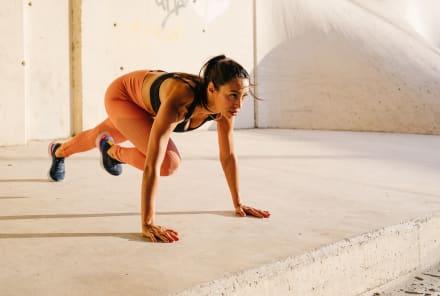
Short On Time? Try This Personal Trainer's 5-Minute Full-Body Workout
Krista Stryker, NSCA-CPT

Short On Time? Try This Personal Trainer's 5-Minute Full-Body Workout
Krista Stryker, NSCA-CPT

Short On Time? Try This Personal Trainer's 5-Minute Full-Body Workout
Krista Stryker, NSCA-CPT

Short On Time? Try This Personal Trainer's 5-Minute Full-Body Workout
Krista Stryker, NSCA-CPT
